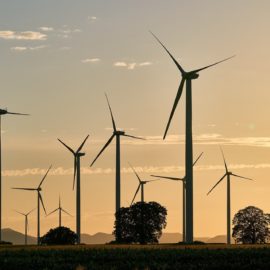
The Supreme Court ruling was a blow but not a knockout one.
The Supreme Court this week may have limited the Environmental Protection Agency ability to fight climate change, but the battle will continue on other fronts, the agency’s director said during a visit to New Orleans on Friday. By a 6-3 vote, the Supreme Court on Thursday ruled that the Clean Air Act does not give the EPA broad authority to regulate greenhouse gas emissions from power plants that contribute to global warming. “The decision was extremely disappointing,” EPA Director Michael Regan said in an interview at the Loews Hotel. “It’s a setback, but it did not take away our ability to regulate greenhouse gases. And we are going to regulate, and do it in a way that’s impactful.”
nola.com
The need may be there but not the permission.
A majority of court justices ruled that the EPA cannot actually cap emissions under current laws, no matter how beneficial such a move might be. “Capping carbon dioxide emissions at a level that will force a nationwide transition away from the use of coal to generate electricity may be a sensible ‘solution to the crisis of the day,'” Chief Justice John Roberts wrote in the decision. “But it is not plausible that Congress gave EPA the authority to adopt on its own such a regulatory scheme.” Several power plant operators also applauded the decision this week, saying it would grant them the flexibility to curb emissions on their own timeline while also increasing power grid reliability. Coal and natural gas plants account for about 30% of the nation’s carbon dioxide pollution. With the EPA taking a lead role, President Joe Biden’s administration had aimed to slash carbon emissions in half by 2030 and eventually steer the power sector toward an emissions-free goal before 2040.
The goal is still achievable but the EPA has to find the way.
Regan says that goal is still achievable. The EPA is still assessing the full impact of the decision on its ability to regulate power plants, but Regan said the agency can take an even more aggressive approach against other emitters, including vehicles and the oil and gas industry. “We’ve already (enacted) the most stringent emission standards on light-duty cars, and we’re proposing more for heavy duty vehicles,” he said. “And we’ve proposed rules for methane emissions for the oil and gas industry that are the most stringent in history.” The agency is also curbing the use of hydrofluorocarbons, the climate-warming chemicals used in air-conditioners and refrigerators.
Regan came to New Orleans for the Essence Festival and was on a couple of discussion panels.
Regan was in New Orleans for appearances at the Essence Festival of Culture. While musical performers like rapper Nicki Minaj prepped for the festival’s Friday night concerts, Regan took part in two afternoon panel discussions about environmental justice and economic development in the Black communities. “The Supreme Court and the members of the Republican party deny science and want us breathing dirty air, drinking dirty water, and they don’t care,” he said during a gathering of social justice and environmental groups. Before he was selected the first Black man to lead the EPA, Regan oversaw the North Carolina Department of Environmental Quality, creating its first environmental justice advisory committee and leading negotiations with energy companies over a toxic coal ash spill in the Dan River. Regan has shown a keen interest in how pollution is harming Louisiana’s low-income and Black communities. In November, he toured several parts of the state, stopping in New Orleans to visit Gordon Plaza, a New Orleans subdivision built on top of a toxic landfill, and making stops in St. John the Baptist, St. James, and Calcasieu parishes to hear about air pollution from chemical plants and refineries.
For Louisiana, the air in Cancer Alley is getting worse and this is what the Supreme Court curbed the efforts to make it better.
Air pollution in the state’s industrial belt, an area between Baton Rouge and New Orleans often referred to as ‘Cancer Alley,’ is rising while the estimated air quality relative to other states is getting worse, according to a 2019 analysis by ProPublica and The Times-Picayune. The burden is not being shared evenly. Many of the new chemical plants planned in Louisiana are being built in or near communities that EPA models estimate already have some of the most dangerous air in America. Problems are especially acute in predominantly Black and poor communities, the analysis found. Louisiana also faces the nation’s highest rate of land loss, intensifying hurricanes and increasing flood risk from harder rains — all of which is human-caused climate change. “You in New Orleans are at ground zero,” he said. “You’re experiencing the climate crisis every day.”
The court ruling left many questions which is fueling the EPA’s thinking.
The Supreme Court decision didn’t address emissions at chemical plants. How it will affect power plants in Louisiana is unclear. The Supreme Court case, West Virginia v. EPA, that led to this week’s decision began with an Obama administration plan that would have required states to cut emissions from power plants, particularly coal-fired ones. The plan was blocked by the Supreme Court in 2016 and then repealed by the Trump administration. Regan noted the court “struck down a rule that never actually took place.” But it had an impact because power plants began reducing emissions and closing coal plants to get ready for it. The decision could have been much worse, Regan said. Some legal experts expected the court to go further, possibly limiting the EPA’s regulatory authority in several other areas. Had the court taken that approach, it might have revolutionized American administrative law, possibly stripping other federal agencies of regulatory authority and placing it in the hands of Congress. “The court could have taken that step but they chose not to,” Regan said. “They still could. It still looms out there. But it has not deterred us from taking an aggressive approach to finding climate solutions.”
The decision could have been worse but, knowing what the court will shoot down helps in deciding what to do.



